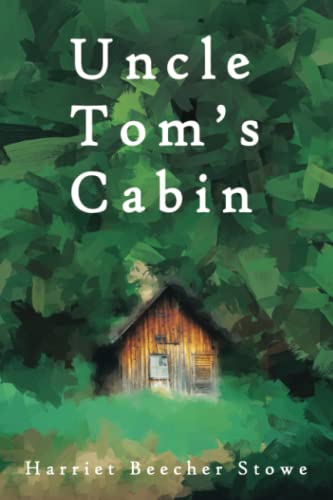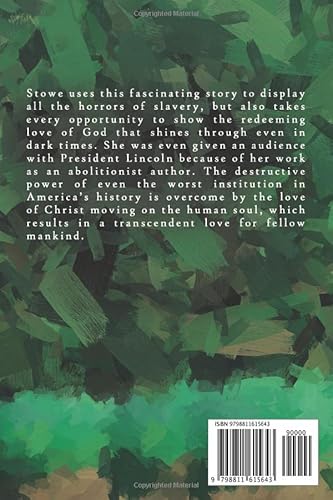Welcome to my entertaining and honest review of Uncle Tom’s Cabin. This classic book isn’t just any old novel; it’s a rollercoaster of emotions and a spark that ignited change. We’ll explore its lively characters, storytelling style, and cultural impact. So, grab a seat and get ready to laugh, think, and maybe even shed a tear as we take a closer look at this influential piece of literature.
In a nutshell
Uncle Tom’s Cabin is a classic piece of American literature by Harriet Beecher Stowe. This anti-slavery novel tackles the harsh realities of life as an enslaved person in the 19th century. With unforgettable characters and engaging storytelling, it draws readers into the emotional and moral dilemmas of its time.
The book, part of the historical fiction genre, delves into themes of freedom, humanity, and the struggle for justice. Stowe’s narrative, rich in emotion and detail, highlights the courage and resilience of the human spirit.
The Influence of Slavery Depiction in Uncle Tom’s Cabin
Ah, the bittersweet tale of Uncle Tom’s Cabin! It’s like my great aunt’s famous bitter-chocolate-chip cookies. Sweet but with a bitterness that makes you pause. Harriet Beecher Stowe’s novel takes you on a journey, shining a light on the harsh realities of slavery in the United States. It broke into the world in 1852, smashing preconceptions about slavery like my cousin Timmy’s head through the window during our annual wrestling match. And wow, did it spark up the controversy!
Stowe managed to depict slavery in a way that was both raw and realistic, which hit people harder than my mom’s meatloaf on a bad day. Her characters were vivid, facing horrifying situations that reminded readers of the cruelty and inhumanity of the institution. She painted a picture so vivid that even my buddy Dave, who usually skips descriptions, couldn’t help but stick around. The novel tugged at the heartstrings of the public and stirred the pot in a way that few books at the time could.
On the flip side, some folks thought the portrayal was a tad too melodramatic—a theatrical performance worthy of an Oscar or two. But hey, even Shakespeare played with drama, right? While the book’s impact on the abolitionist movement is undeniable, some critics argue it leaned a bit too hard on stereotypes. You know, like when your buddy leans too hard on your shoulder during karaoke.
Stick around, and we’ll roll into the next chapter: Character development and realism. Hold onto your hats!
Character Development and Realism in Uncle Tom’s Cabin
You ever read a book and feel like the characters leap off the page and sit right next to you, maybe drinking a cup of tea you forgot about? That’s what happens with Uncle Tom’s Cabin. Harriet Beecher Stowe crafts characters so vivid and real, it’s like she sprinkled magic dust on them. Now, don’t get me wrong, the book does have its ups and downs when it comes to character development.
Take Uncle Tom himself, for instance. He’s like that friend who always shows up with a smile and endless patience, even when life just keeps throwing him curveballs. Stowe does a great job of bringing out Tom’s saint-like demeanor, but at times, he feels almost too good to be true. I can picture him in a superhero cape, battling wrongs with his pure heart.
Then there’s Eva, the little angel whose innocence shines brighter than a supernova. She’s the kind of kid you’d want to babysit, ’cause she’d probably end up teaching you morals instead! But hey, sometimes her perfection felt a bit unrealistic. Like, who grows up without a single tantrum?
On the flip side, Stowe’s portrayal of flawed characters like Simon Legree adds a gritty realism. You can almost smell his awful intentions. Yet, some characters wander into stereotype territory, missing the depth that makes them relatable. So, in terms of realism, it’s like a roller coaster that sometimes stalls on the big loop.
Stay tuned, because up next, we venture into the art of narrative style and how Stowe paces this iconic story.
Narrative Style and Pacing in Uncle Tom’s Cabin
When I started reading Uncle Tom’s Cabin, I felt like I was riding a roller coaster blindfolded. One moment we’re sipping tea in a cozy parlor, the next we’re racing down a muddy road with rain pelting our faces. Harriet Beecher Stowe sure keeps you on your toes! Her narrative style is quite the mixed bag. She writes with a conversational tone that makes you feel like she’s your neighbor, just chatting over the fence. But don’t be fooled, because she weaves intricate details and vivid descriptions that paint the scenes in your mind.
Stowe uses episodic storytelling, jumping between different characters’ lives like a frog on a lily pad. It brings variety but can also make you feel a bit dizzy. I sometimes found myself trying to remember if I was following Tom’s, Eliza’s, or Eva’s story. It’s almost like Stowe hands each character a baton in a race that’s sometimes smooth and sometimes a stumble.
The pacing? Well, it reminded me of my old treadmill: slow and steady, then suddenly cranking up speed, throwing me off balance. One chapter will simmer with deep conversations, and the next, you’re gripping the book like a corndog at a fair as characters make daring escapes. The shifting tones, from tense moments to ones of human kindness, can be jarring but they definitely keep you engaged.
After navigating this roller coaster of a narrative, the next stop in our adventure will explore the cultural and historical significance of Uncle Tom’s Cabin—and trust me, it’s a wild ride through history worth taking!
Cultural and Historical Significance of Uncle Tom’s Cabin
When I first picked up Uncle Tom’s Cabin, I wasn’t expecting a whirlwind trip through America’s pre-Civil War tension. This book made waves like a kid doing cannonballs at the local pool. Harriet Beecher Stowe, the author, wrote it back in 1852. Her work turned up the volume on the abolitionist movement like nobody’s business. Folks say President Lincoln even called her ‘the little lady who started this great war.’ Now, I wasn’t there, but it sounds like a testament to its impact.
Here’s the fun part: the book’s cultural footprint isn’t just historical. It laid a foundation for future generations to chew on themes of empathy, freedom, and social justice. You read it today, and you still find ideas worth wrestling with. But let’s not gloss over the critiques. Some argue that Uncle Tom’s portrayal and other character stereotypes are problematic. It’s like wearing socks with sandals—divisive and a tad uncomfortable.
On the plus side, it sparked a conversation that folks are still having today. Like a good barbecue, it brought people together, even if they couldn’t agree on everything. And much like a mystery novel, it keeps readers turning the pages with an eye toward change.
So, if you’re in the mood for something that packs a punch and gets the gears turning upstairs, give Uncle Tom’s Cabin a whirl. Just know what you’re stepping into, and you won’t regret the journey.
Conclusion
Wrapping up this review, ‘Uncle Tom’s Cabin’ packs a punch. Harriet Beecher Stowe takes readers on a rollercoaster of emotions, creating relatable characters caught in the jaws of slavery. The book’s pacing sometimes feels like my granny’s driving—fast one minute, slow the next. But hey, the impact it had on the abolitionist movement can’t be overstated. While some stereotypes in the book might make you cringe, it’s a powerful piece of history that sparked change. I laughed, I cried, and I spilled coffee on it. Overall, it’s worth the read, though you might need an extra bookmark to keep up!



